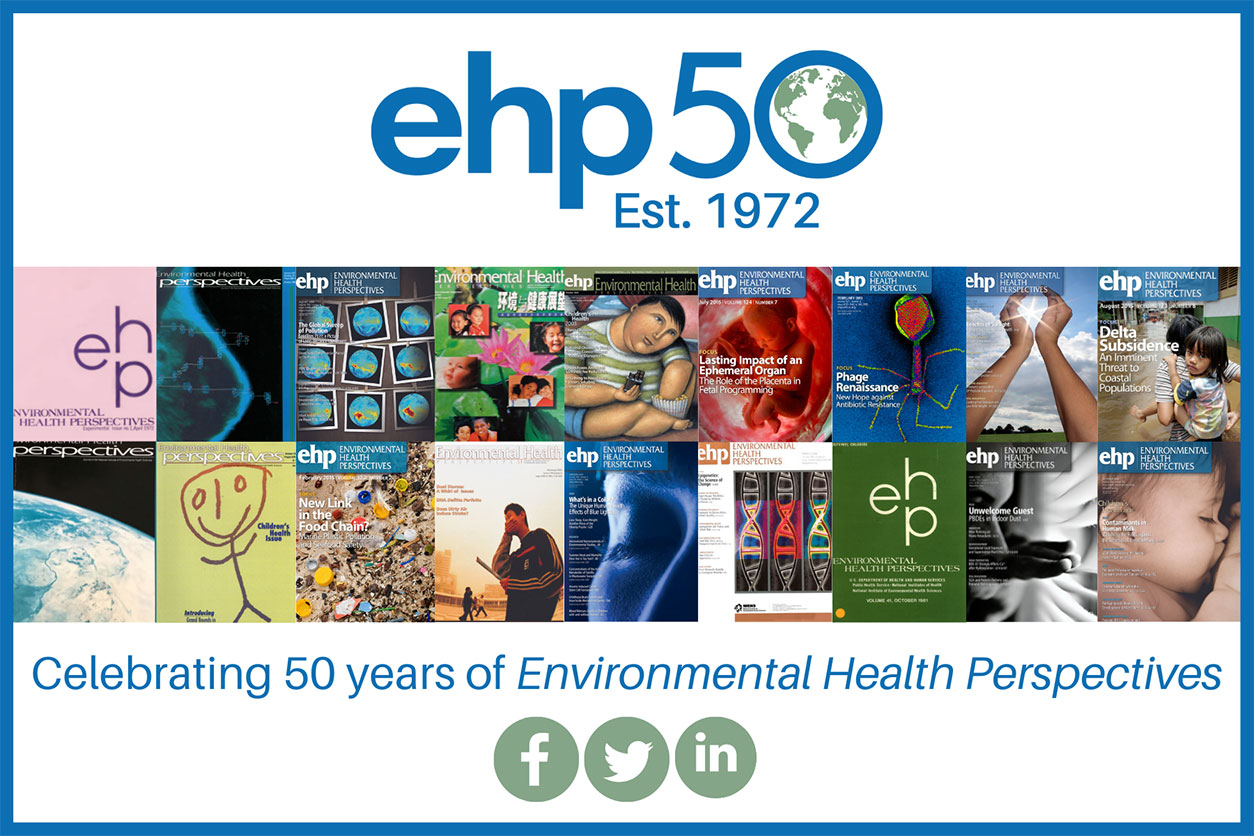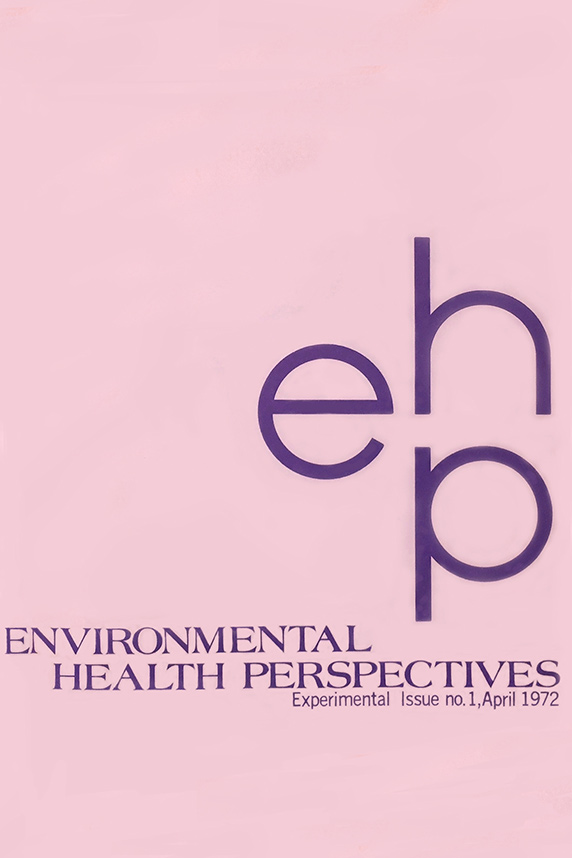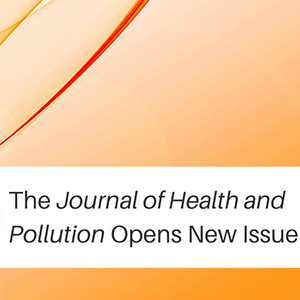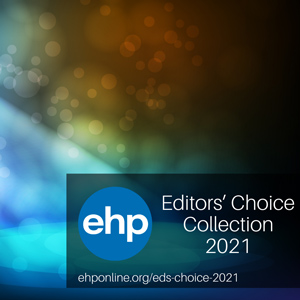In 1972, just a year into his tenure as director of NIEHS, David Rall, M.D., Ph.D., launched a publication called Environmental Health Perspectives (EHP). In the half-century since, the scientific journal — still supported by the institute — has evolved into a top-ranking venue for research and news in the fields of environmental toxicology, environmental epidemiology, exposure biology and measurement, risk assessment, and related policy development and evaluation. The now-monthly journal is fully open access, meaning that all content is freely available worldwide.
 (Image courtesy of EHP)
(Image courtesy of EHP)EHP’s early issues carried the proceedings of conferences that NIEHS hosted “as a means of assessing current state of knowledge [on current environmental problems] and possible impact on human health, and identifying research that should be undertaken,” according to the NIEHS Annual Report for fiscal year 1972–1973. Those initial topics are a reminder that some health threats remain a concern today.
- Phthalate esters.
- Heavy metals.
- Asbestos.
- Chlorinated dibenzodioxins and dibenzofurans.
EHP would continue publishing conference proceedings to ensure “maximum communication of research findings,” the report stated. “Reactions from those who read Perspectives indicate our efforts in this direction are successful.”
Reliable research underpins solutions
“Since its launch, the journal has been premised on the idea that increasing the availability of information on the environmental health sciences is essential to solving environmental health problems,” noted Editor-in-Chief Joel Kaufman, M.D., in an editorial marking the anniversary. “Our focus has remained resolutely on the intersection between the environment and human health, and the development of the journal has mirrored the impact that the NIEHS has had in fostering the science underlying environmental decision making.”
 Early issues of the journal had a solid color cover and a classic 1970s vibe. (Image courtesy of EHP)
Early issues of the journal had a solid color cover and a classic 1970s vibe. (Image courtesy of EHP)Research shared in EHP’s pages — whether print or web — continues to support improvements in environmental health, as demonstrated by the journal’s new interactive timeline (see top sidebar).
- The first issue was dedicated to research on polychlorinated biphenyls, which were banned by the U.S. Environmental Protection Agency (EPA) just seven years later. EPA proposed updates in 2010, citing EHP publications among the references.
- In 1981, the journal published proceedings of the first Symposium on Environmental Epidemiology — six years before the founding of the International Society for Environmental Epidemiology.
- In 1994, early findings on endocrine disrupting chemicals hit the stands.
- Amendments to the National Ambient Air Quality Standards, to reduce ozone and address exposure to fine particulate matter, cited nearly a dozen EHP papers.
- EPA limited uses of the pesticide chlorpyrifos in June 2000. By then, EHP had published more than 50 articles — including news, reviews, and original research — on the widely used chemical.
Since 2018, editors have helped researchers and readers locate studies on timely subjects by inviting experts to curate collections on topics ranging from developmental toxicology and the microbiome to environmental racism and indigenous health. Two more collections highlight the annual Journal Impact Factor, which has risen to 9.031, with a five-year impact factor of 10.776.
 Kaufman is a professor in the departments of Environmental & Occupational Health Sciences, Medicine, and Epidemiology at the University of Washington (UW), where he served as interim dean of the UW School of Public Health from 2016 to 2018. (Photo courtesy of Joel Kaufman)
Kaufman is a professor in the departments of Environmental & Occupational Health Sciences, Medicine, and Epidemiology at the University of Washington (UW), where he served as interim dean of the UW School of Public Health from 2016 to 2018. (Photo courtesy of Joel Kaufman)This year, for the first annual Editors’ Choice Collection, the science editors showcased research that fills data gaps, uses innovative techniques, represents the breadth of topics covered by EHP, and has other notable characteristics.
New ventures for new times
In January 2021, the staff held a virtual strategic summit with stakeholders to update the journal’s vision, mission, and goals. The results can be seen in initiatives already in place, as well as some still in the works.
- Early Career Researcher Initiative — An advisory panel is entering its second year of guiding the organization in strengthening the next generation of environmental health researchers.
- Global focus — The journal’s longtime outreach to researchers and policymakers worldwide is now focusing on actions that foster an innovative, diverse, international community of contributors. According to Kaufman’s editorial, later this year, the journal will announce a new platform for the work of environmental health scientists in low- and middle-income countries.
- New article types — In addition to Invited Perspectives and Research Letters, first published last year, EHP will soon release guidelines for new review types covering advances in fundamental science and innovations in methodologies.
“EHP has been a groundbreaker and guiding light in the environmental health sciences for decades,” said Rick Woychik, Ph.D., director of NIEHS and the National Toxicology Program. “I am very excited at the new directions the journal is taking.”
“Help us celebrate this anniversary,” wrote Kaufman. “Let us know how we are doing. And keep sending us your best work.”
(Kelly Lenox is associate news editor for EHP and former Editor-in-Chief of the Environmental Factor.)









